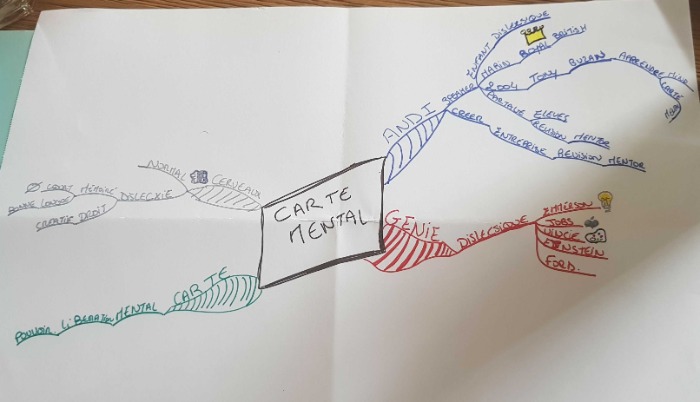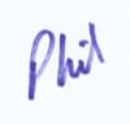Watch out for "Banana Branches" on your Mind Map!
Fat to thin is the key!

Okay - at first glance, it doesn’t look like there is a lot of content on the Mind Map - but when you look a little closer you find that the keywords are very well chosen and representative of the live presentation that was made.
Bear in mind that the Live Time Mind Map during the Spoken Presentation discipline is the most difficult one to master, I am delighted that the overview of the whole talk was recorded.
Refine the Central Image
The Central Image is the correct size - but as it is only in one colour and is essentially “a box with writing in it” it doesn't score very highly on the Paris Marking Scheme. Many more points could have been awarded had the competitor instead created a visual representation of the topic of the talk.
I understand that this can sometimes be a challenge when faced with a live-time talk - so what I will sometimes do is leave a space for the Central Image if nothing immediately springs to mind and create it at the end when the permitted “tidy up time” is allocated for this discipline.
Usually, something will spring to mind during the process and I can sketch out and finish the Central Image during the talk as I am listening and recording keywords.
Focus on Branches
The main branches could be refined a little by remembering that they should flow “fat to thin” rather than be what Tony Buzan referred to as “banana-shaped” where they go “thin to fat to thin” .. this is a minor modification that would help this Mind Map to look and feel much more elegant.
Even More Images!
I would love to see even more images incorporated into this Mind Map - remembering that a single image can replace multiple keywords and makes the whole Mind Map infinitely more memorable, Under the Paris Marking Scheme the gold standard is that “at least ten images” are incorporated into a Mind Map and this would be a very good target to aim for to gather more Championship Points.
This competitor however has a very clear understanding of the rules of Mind Mapping and I feel that with a little practice they will become excellent in creating real-time Mind Maps as they develop the skill of being able to listen and record more keywords.
All in all, I think this is a wonderful attempt at one of the more difficult fast-paced, and stressful disciplines.
Looking forward to seeing how this competitor develops over the next year before the 2022 Championship,

This is an effective Mind Map but a few tweaks could easily pick up some more points under The Paris Marking Scheme.
Choice of Colours
Colour plays a vital role in a Mind Map. With four branches there is plenty of scope for vibrant colours. I think Pink, Purple, Orange (even brown) would be preferable to grey. A drab grey branch tends to get a bit lost. Invest in some quality fine-liner pens if you don’t already have them. A set of 10 would suffice to start with.
Basic Ordering Idea Text
Take care with the text on the main branches. It needs to be bold and outstanding. Lettering is mostly clear and appropriately sized except for ‘cerveaux’. I can understand this was made smaller to allow space to draw the brain sketch. However, the branch could easily have been longer (as all the other Main Branches are) to accommodate the longer word and image.
Floating Images
An important rule is that all images are placed on branches. You may not want to develop beyond Einstein, Jobs or Leonardo da Vinci so adding an image at the end may seem OK. However, any images placed at the end of a branch block flow and images floating in space become dissociated. When tidying up your Mind Map do a final check and add branches under any images which aren’t already on one. This saves you throwing away points.
Just make these few changes and you’ll significantly move up the rankings.


